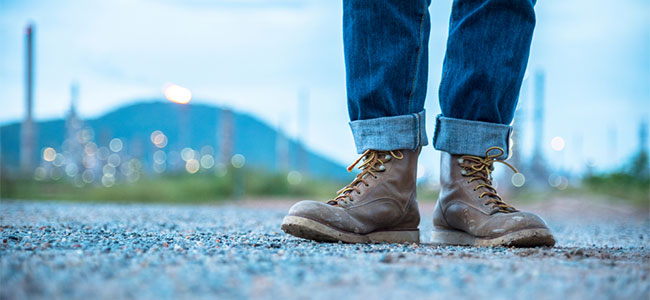
Safety Footwear: More Than Just Protection
From tailor-made fits using advanced technology to eco-friendly materials, ensuring workers’ foot safety involves several key considerations.
- By Tito Warren
- Nov 08, 2023
Safety footwear provides a foundation for every worker on the job, and a work boot that doesn’t fit correctly isn’t living up to its full potential. It is critical to understand the latest innovations in safety footwear to help keep workers out of harm’s way on the jobsite.
Below, you will find a comprehensive guide on what to take into consideration and how to best approach selecting proper foot protection for workers.
Customize Safety Footwear to Your Jobsite
It is essential that you customize your PPE program to your jobsite, including safety footwear. What conditions are your workers exposed to? Does your site experience extreme temperatures? Are your workers operating heavy machinery, or exposed to electricity? Planning with your PPE partner and undergoing assessments and job hazard analyses (JHAs) can aid with identifying the proper foot protection for workers.
Foot protection is especially important in environments with extreme weather, which poses an increased risk for falls, fatigue and environmental injuries. In cold environments, such as construction jobsites during the winter months, select work boots with materials that are insulating and water resistant. In the summer months, seek out footwear that offers ventilation and breathability to aid in temperature regulation for workers. Practice thermal management and seek out work boots that offer the latest technology to help workers feel at ease year-round.
While there is guidance for specific safety requirements for most jobsites, safety footwear no longer needs to be synonymous with bulk to offer maximum protection. Lightweight material advances are playing a role in providing mobility and comfort to workers. For example, for mid-duty work, lighter boot options are available that leverage lightweight cement construction, alongside this aluminum safety toe and an exceptionally light outsole.
Material advances are changing the industry by providing workers with exceptional traction and protection without compromising performance.
Importance of Proper Fit
From worker to worker, to the left and right foot, everyone’s feet are unique and foot protection should be highly personalized to the individual. Poorly fitted work boots can lead to increased fatigue and long-term problems with ankles, knees, lower back and joint pain, so finding the proper fit is essential for the well-being of your workers.
Men’s and women’s feet, for example, vary greatly. The right fit should be snug without being overly tight, and foot protection should not limit mobility but should not have extra space in the heel, toe or side. This can be especially difficult to find for women whose feet require a different standard of measurement than men. In these cases, seek out a work boot designed specifically for women to ensure your foot protection provides the highest possible level of safety and comfort.
Understanding the latest industry innovations for work boot fit is also critical. New techniques used for fitting include AI and 3D-mapping technology to analyze foot measurements such as shape, arch height, volume and even pressure points of a worker’s foot.
Utilize your PPE partner to host a fit event on your jobsite, or encourage your workers to go into a store to talk to a fit expert who specializes in safety footwear. Well-trained fit experts will ask questions about your jobsite and assess your workers’ feet using these technologies to provide personalized safety footwear recommendations, including a work boot, socks and footbeds.
Consider Sustainable Materials
With sustainability being the prioritization of many industries, the safety industry is taking a stride forward to increase efforts, especially when it comes to footwear. There is an opportunity to prioritize recycled, sustainable and natural materials, all while maintaining the functionality and construction of work boots.
Recycled plastic bottles and rubber allow safety footwear to be environmentally responsible as well as being lightweight, versatile, and durable. Along with recycled resources, renewable materials like sugarcane provide an alternative to traditional high-impact methods and are successfully being integrated into work boot designs. Many improvements in ecological materials have been made, offering high performance and protecting employee safety.
Choose a trusted partner for PPE that offers sustainable, responsible options to achieve environmental, social, and governance (ESG) goals and enhance employee safety. You can effectively meet sustainability objectives without compromising on the protection and well-being of your workers.
This article originally appeared in the November/December 2023 issue of Occupational Health & Safety.